Vermont is known for its cheese, maple syrup, and its natural beauty that draws leaf-peeping city dwellers to the outdoors. Known as the Green Mountain State, it’s also an ideal place to get away and discover some of the most remote spots.
According to the U.S. Census, Vermont’s population in 2020 was only 643,077. It ranked 50th of the country’s most populated states (including Washington, DC), beating out Wyoming. That means there’s plenty of room to spread out and enjoy the secluded spaces of Vermont. Read on to learn about the most remote spots in Vermont and how to get there safely!
1. Little River State Park
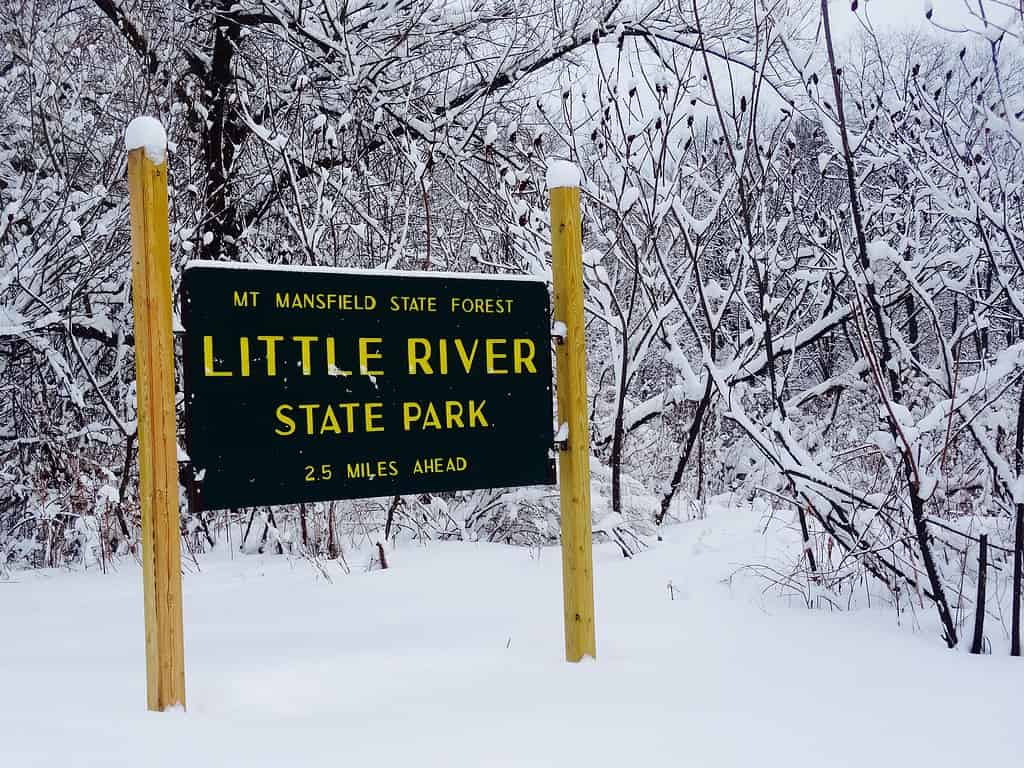
Little River State Park offers many outdoor activities including fishing. The Waterbury Reservoir is located in the park, where you can fish for bass and trout.
© Marie-Pier Arseneault/ via Getty Images
Considered one of the most popular campgrounds in central Vermont, Little River State Park offers a chance to revel in the remote, serene beauty without being too far away from civilization. The park offers camping, hiking, swimming, fishing, and mountain biking. Remote camping, or primitive camping, sites are available for reservation if you’re looking for a more isolated experience. Explore the 28 miles of hiking trails that include historic remnants from an 1800-era settlement.
Little River State Park is part of Mt. Mansfield State Forest, near Waterbury, VT. It sits between Burlington (about 32 miles away) and Vermont’s state capital, Montpelier (about 17 miles away). Once you’ve had your fill of the park’s remote setting and natural beauty, you can venture back to a populated area and enjoy some Ben and Jerry’s at the ice cream factory, only about 15 minutes by car!
2. Bolton, VT.
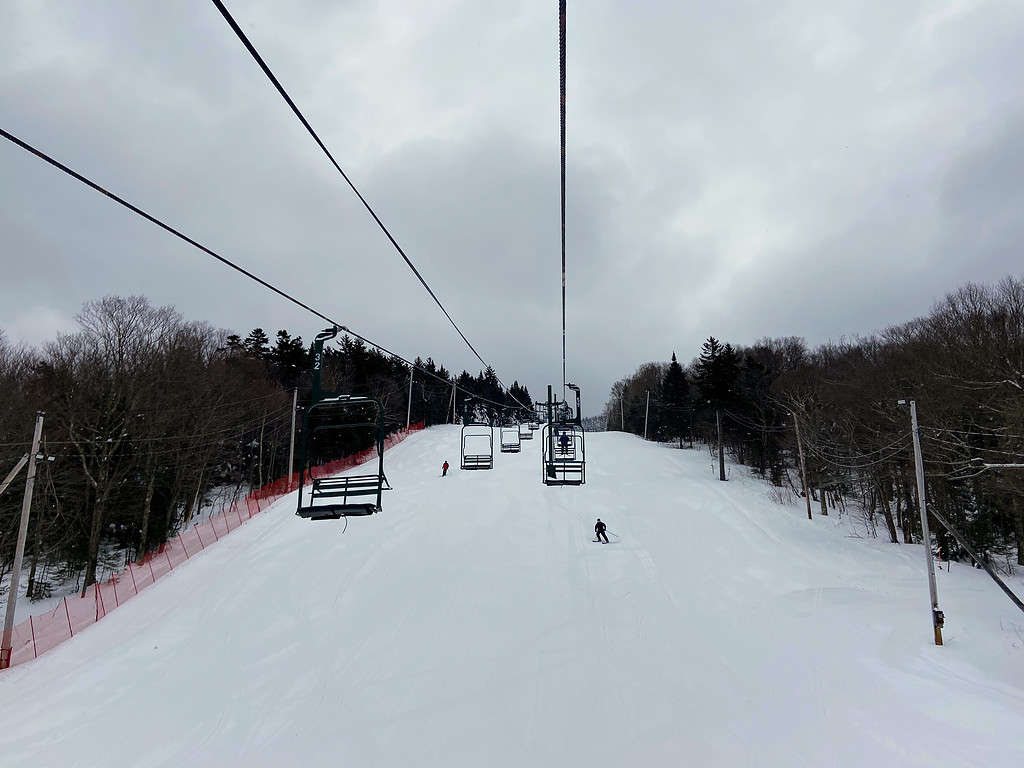
Bolton Valley has 165 acres of skiable land with six lifts and 71 trails.
© Ray Tan/ via Getty Images
If you’re looking to get away, but not interested in camping, Vermont is home to many bucolic towns that still offer a feeling of being off the grid. Bolton, VT. is one of those towns. Its population is just over 1,300 and is known for its ski resort, Bolton Valley. Regardless of the season you visit, you can enjoy the picturesque mountains and feel far away from any bustling city.
3. Woodford, VT.

While Woodford is a remote town in Vermont, the small college town of Bennington is only about eight miles away.
© Jacob Boomsma/ via Getty Images
Located near the southwestern corner of Vermont, Woodford is another quaint town with easy access to the remote beauty of the surrounding nature. According to the 2020 U.S. Census Bureau, Woodford’s population is only 414, which means you’ll have the amenities of a small town but still experience the isolation and natural landscapes of the area. And with so many outdoor activities—including golfing, hiking, and skiing—you’ll enjoy any season!
4. Green River Reservoir State Park
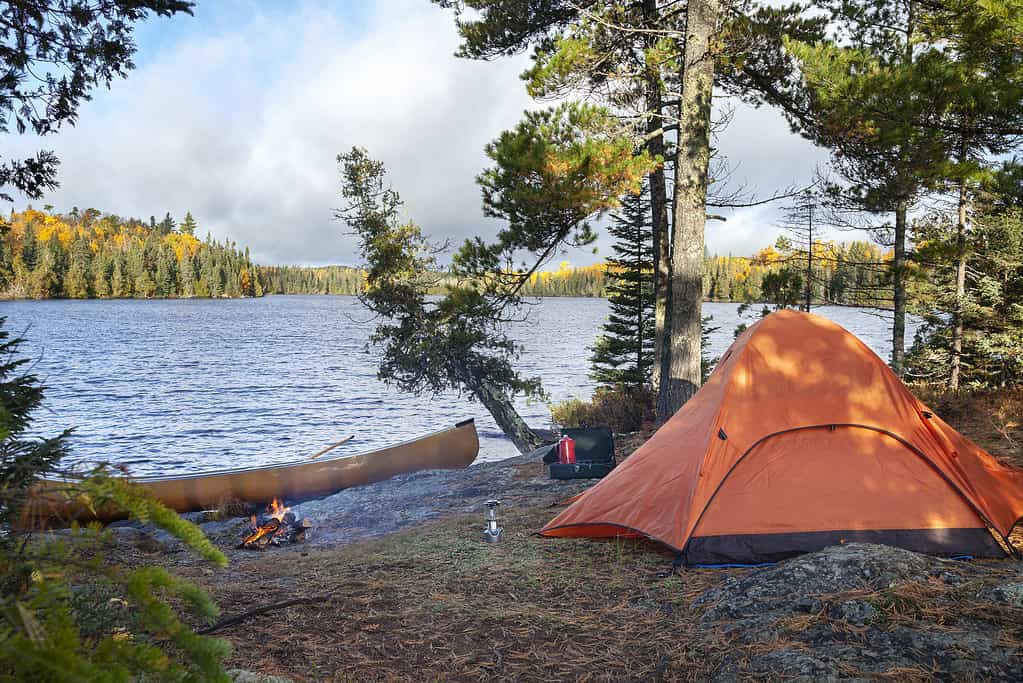
Green River Reservoir State Park offers 27 remote camping sites, all accessible by boat. Remote camping refers to camping with simply a tent without amenities like running water or electricity.
© Willard/ via Getty Images
Roughly 57 miles from the border between the U.S. and Canada, Green River Reservoir sits in the northern part of Vermont. Travelers can access the 653-acre reservoir at its southern point off of Green River Dam Road. It includes 19 miles of undeveloped shoreline, so bring your canoe or kayak to enjoy the pristine waters. Because Green River Reservoir is considered a quiet lake, watercraft that are powered by electric motors over 5 mph are prohibited. This makes it a great lake for fishing. Pickerel, bullhead, and panfish live in the waters of the Green River Reservoir. You’ll need to bring your paddles if you plan to camp in this remote state forest. All camping sites are accessible by boat only.
5. Lye Brook Wilderness
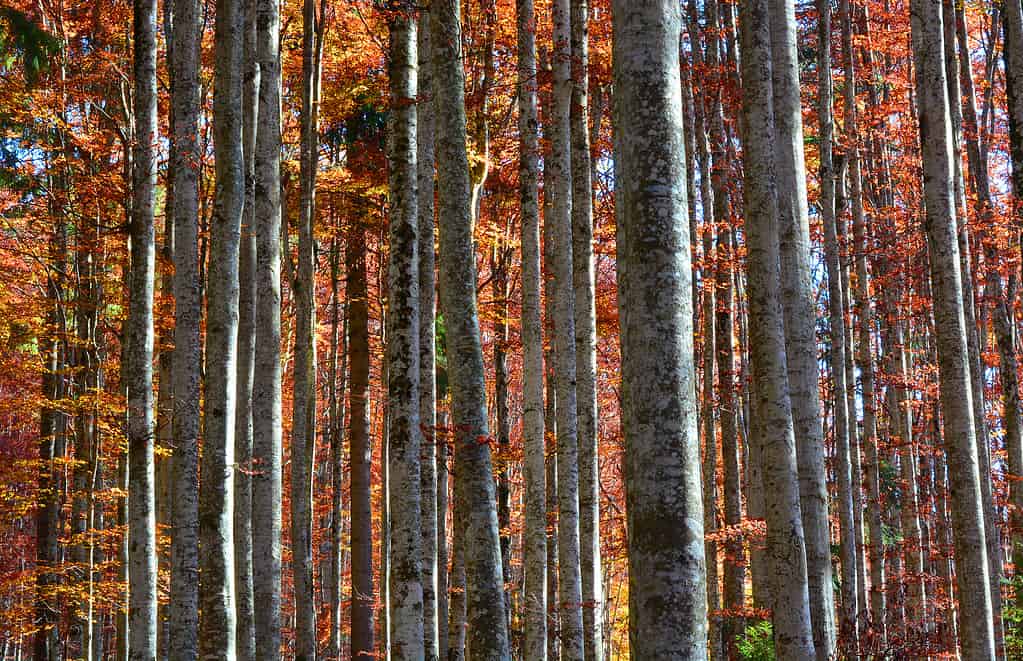
When exploring the Lye Brook Wilderness, you’ll likely encounter northern hardwood trees like birch, beech, and maple. There are also thickets of spruce trees scattered throughout the forested area.
© corradobarattaphotos/ via Getty Images
The Lye Brook Wilderness Area is part of the Green National Forest. It’s made up of 18,122 acres, the majority of which is forested, making it one of the top remote places in Vermont. It’s also ideal for exploring the wilderness and spot wildlife like neotropical birds, deer, moose, and black bears.
6. The Long Trail
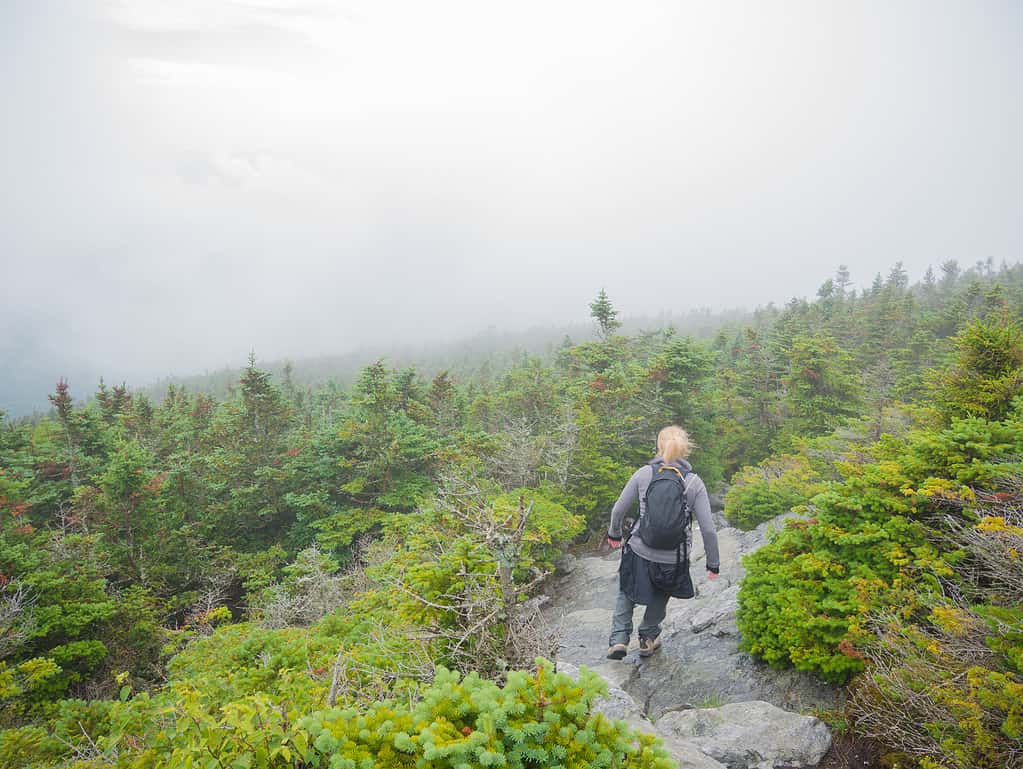
The Long Trail inspired the creation of the Appalachian Trail. The two footpaths overlap, so the southernmost 104 miles you’re trekking both the Long Trail and the Appalachian Trail.
©Christian Ouellet/ via Getty Images
The Long Trail is the country’s oldest footpath in the U.S. Its construction began in 1910 and was completed in 1930. The Long Trail also inspired the Appalachian Trail. It runs the length of the state, from the Massachusetts border to the Canadian border. That means you have 272 miles of wilderness. Hikers of the Long Trail describe encountering ski lifts and roads, but no other man-made structures or towns throughout the entire length of the trail.
7. Knight Island State Park
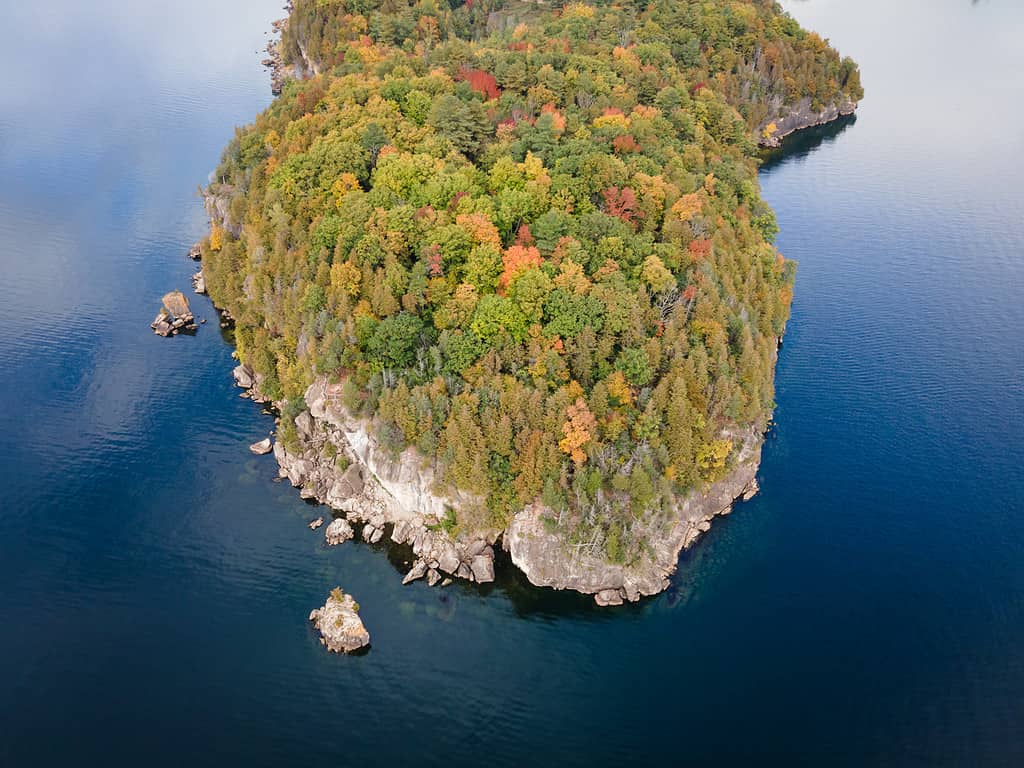
Knight Island is one of several islands on Lake Champlain. The freshwater lake shares shorelines with Vermont, New York, and Canada.
© Eifel Kreutz/ via Getty Images
Just as the name suggests, Knight Island State Park is a small island in the northern part of Vermont. Located on Lake Champlain, it’s about 115 acres of rustic wilderness that requires a boat to reach the island. There are no docks and no potable water on the island. That means if you make a reservation to camp out on Knight Island, come prepared.
8. Owl’s Head Mountain
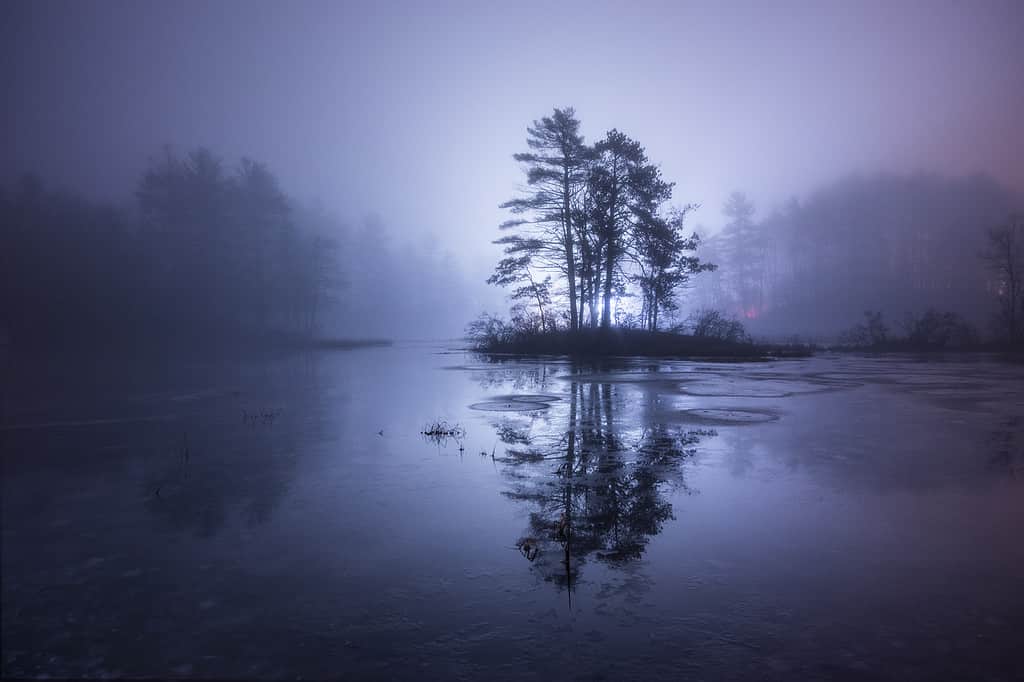
Lake Groton, VT. is about 5 miles from Owl’s Head Mountain. From the overlook, you can likely see the Stillwater Brook, the waterway that connects Lake Groton with Kettle Pond, another nearby body of water.
© Cavan Images/ via Getty Images
Located within the vast 26,164-acre Groton State Forest, Owl’s Head Mountain offers a breathtaking view of undeveloped, natural beauty. Owl’s Head has an elevation of 1,457 ft. and the four-mile trail is considered easy for most hiking levels. From the mountain’s high perch, you’ll see how remote and picturesque the Vermont landmark is and its breathtaking surroundings.
9. Maidstone State Park

Maidstone Lake was formed from a glacier about 12,000 years ago. The waters of the lake make Maidstone an ideal place for fishing.
© kaiao/ via Getty Images
Located in the northeastern corner of Vermont, the Maidstone State Park is about 55 miles from the Maine state line. It’s considered part of the Northeast Kingdom, a region in the state known for its remoteness. In fact, Vermont State Parks calls Maidstone the state’s most remote state park. The Maidstone Lake is a glacier lake with pristine waters to swim in and to spot loons nesting nearby. Whether you enjoy the camping amenities or visit for a day hike, you’ll feel far from civilization and deep in the natural beauty of the Green Mountain State.
| Remote Spot | Coordinates |
|---|---|
| 1. Little River State Park | 44.4097767°N, -72.7965089°W |
| 2. Bolton, VT. | 44.3726°N, -72.8788°W |
| 3. Woodford, VT. | 42.8804°N, -73.0795°W |
| 4. Green River Reservoir State Park | 44.632227°N, -72.5194624°W |
| 5. Lye Brook Wilderness | 43.131250°N, -73.039694°W |
| 6. The Long Trail | 43.2580495°N, -72.9383612°W |
| 7. Knight Island State Park | 44.81148190°N, -73.25351440°W |
| 8. Owl’s Head Mountain | 44.296111°N, -72.293972°W |
| 9. Maidstone State Park | 44.6311643°N, -71.653144°W |
How to Get There Safely
Regardless of your Vermont adventure, make sure you take steps to ensure your safety when traveling to a remote area. Below, you’ll find some tips to make sure you stay safe.
- Research. Even before you leave for your remote adventure, do your homework. Gather as much information as you can about where you’re traveling to, the road and weather conditions you may encounter, and places nearby like gas stations or towns that could provide you with necessary supplies.
- Pack Extras. Since there’s always the possibility of changing plans, bringing extra water, food, or other supplies will ensure you’ll be prepared if you run into any issues.
- Prepare for Offline Living. In this age of the internet and smartphones, it’s easy to rely solely on Google Maps. But what happens when there’s no signal? Bring a paper map, compass, or learn some basic navigation techniques to keep from losing your way. Even splurging on a PLB, or Personal Location Beacon device could become an invaluable investment for your remote wilderness adventure.
- Don’t Do it Alone. The safest way to travel is with someone. Even if you do plan a solo trip make sure someone knows where you’re going, for how long, and how they can reach you if any issues arise.
Vermont’s Most Remote Spots: Conclusion
With one of the least populated states in the U.S., Vermont has plenty of options to enjoy the remote, natural beauty that is quintessential to the Green Mountain State. Wherever your wanderlust takes you, make sure you prepare properly, take the appropriate safety precautions, respect the wildlife, and savor the peace and quiet!
The photo featured at the top of this post is © Anita Warren-Hampson/ via Getty Images
Thank you for reading! Have some feedback for us? Contact the AZ Animals editorial team.






